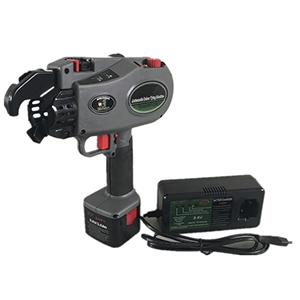How to Operate a Rebar Tying Machine?
Rebar tying machine, also known as Automatic rebar tying machine or rebar tier, is a handheld battery rebar fast-tying tool. It is an intelligent tool with a built-in microcontroller that can automatically complete all steps of rebar bundling, which can be widely used in the field of construction engineering to replace manual bundling of rebar. The rebar tying machine is mainly composed of four parts: body, special wire reel, battery box, and charger.
Rebar tying machines are becoming increasingly popular in the construction industry due to their ability to automate the process of reinforcing steel bars. These machines can significantly increase productivity and reduce labor costs on construction sites. In this article, ATO will provide an operation guide on how to operate a rebar tying machine.

Step 1: Familiarize Yourself with the Machine
Before operating a rebar tying machine, it is important to read the user manual carefully and understand the various parts of the machine. It is essential to know the correct loading procedure for wire spools, how to adjust the tension and length of the wire, and how to clean and maintain the machine.
Step 2: Prepare the Rebar
To prepare the rebar for tying, ensure that it is clean and free of any debris that may interfere with the tying process. The rebar should also be placed in the correct position, ready for the machine to tie it.
Step 3: Load the Wire
Once the rebar is prepared, it is time to load the wire spool into the machine. The wire should be loaded according to the instructions in the user manual. Typically, the wire spool is loaded by inserting it into the wire feeding port and pushing it into place.
Step 4: Adjust the Wire Length and Tension
Next, adjust the wire length and tension to the desired settings. This step is critical to ensure that the machine produces a secure and tight knot around the rebar. Wire length and tension settings may vary depending on the size and thickness of the rebar being tied.
Step 5: Position the Machine
Place the machine in the correct position above the rebar for tying. When placing the machine, the wire guide should be aligned with the rebar, and the knotting mechanism should face down towards the rebar.
Step 6: Activate the Machine
Activate the machine by pressing the trigger or button on the machine. The machine will automatically twist and cut the wire to the correct length and then wrap it around the rebar, producing a secure and tight knot. According to its design, the machine can usually bundle several steel bars at the same time.
Step 7: Repeat the Process
Repeat the process for each rebar that needs to be tied. It is important to monitor the machine and wire spool throughout the process to ensure that the wire does not run out.
Step 8: Clean and Maintain the Machine
After using the machine, clean and maintain it according to the instructions in the user manual. This step is critical to ensure the longevity and reliability of the machine.
Rebar tying machines offer several advantages over manual tying methods. They can significantly reduce labor costs and increase productivity on construction sites, allowing workers to focus on other tasks. They also provide consistent and reliable results, ensuring that rebars are tied securely and to the correct specifications. By following these simple steps and taking the time to familiarize yourself with the machine, ATO industrial automation believes you can operate the rebar tying machine with confidence and ease.

